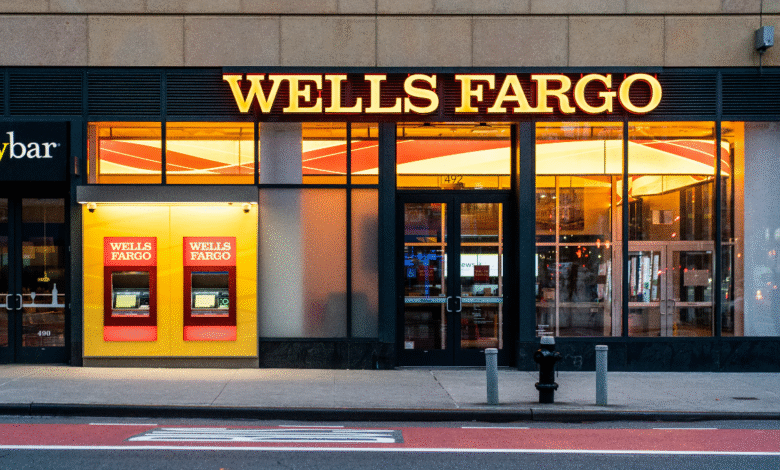Wells Fargo Layoffs: What’s Really Happening Behind the Scenes?

Wells Fargo layoffs explained: discover the reasons, impact, employee reactions, and future outlook in this in-depth expert analysis of the evolving banking industry.
The topic of “Wells Fargo layoffs” has been buzzing in the financial world, shaking both employees and stakeholders. When a giant like Wells Fargo trims its workforce, it doesn’t just affect the internal operations of the company—it ripples throughout the industry. Whether you’re an investor, a job seeker, or simply someone who follows economic trends, this article will break down what’s going on with Wells Fargo layoffs in a way that’s informative, engaging, and clear.
We’ll unpack the reasons, consequences, trends, and what the future could look like. And yes, while it’s a tough topic, there’s a lot to learn from it, especially if you’re trying to stay ahead of economic changes.
The Background of Wells Fargo Layoffs
Layoffs are not new in the corporate world, but when a bank as big and historically stable as Wells Fargo makes headlines for cutting jobs, it signals something more significant. For years, Wells Fargo has been a symbol of stability in American banking. With roots tracing back to the mid-1800s, the company has survived wars, recessions, and numerous economic shifts.
However, recent years have brought unprecedented changes. From the rise of digital banking to internal scandals and compliance issues, Wells Fargo has had to restructure significantly. Layoffs have become part of this transformation, not because the company is failing, but because it’s trying to pivot in a rapidly changing environment.
In the last few years, announcements about Wells Fargo layoffs have raised eyebrows. Employees have found themselves uncertain about job security, and the banking industry at large is watching closely. As one of the top four banks in the U.S., Wells Fargo’s moves often set the tone for competitors.
Why Are Wells Fargo Layoffs Happening?
Understanding the reason behind these layoffs requires looking at multiple factors. First and foremost is the shift to digital banking. As more customers manage their finances online, the need for physical branches and in-person services has decreased. Naturally, this reduces the demand for staff in traditional roles.
The bank is also investing heavily in technology. That means roles in automation, cybersecurity, and fintech are on the rise, but others—like tellers and administrative positions—are being phased out. It’s not just a job cut; it’s a job shift. New roles are emerging, but they’re not always available to those being laid off.
Another major factor is cost-cutting. Wells Fargo, like many institutions, faces pressure from shareholders to maximize profits. Layoffs are a quick way to reduce expenses and boost quarterly earnings, even if they come with long-term risks to morale and reputation.
Then there’s the regulatory pressure. Wells Fargo has been under intense scrutiny following scandals involving fake accounts and unethical practices. As part of its effort to clean up its image and practices, the company is restructuring entire departments, which inevitably leads to job reductions.
How Wells Fargo Layoffs Are Impacting Employees
If you talk to former or current employees affected by Wells Fargo layoffs, you’ll hear a mix of frustration, sadness, and uncertainty. Many workers felt blindsided, while others saw the writing on the wall months before the official announcements.
Laid-off employees often face not just the challenge of finding a new job but also the emotional toll of losing their sense of stability. Some had been with the bank for decades, dedicating their careers to what they believed was a long-term opportunity.
There’s also a growing concern about age discrimination, as some layoffs have disproportionately affected older workers. This adds a layer of legal and ethical questions to the mix. While Wells Fargo maintains that its layoff decisions are strategic and non-discriminatory, critics argue that the optics tell a different story.
To help transition affected employees, the bank has offered severance packages and career counseling. However, for many, the support doesn’t go far enough, especially in a competitive job market where financial sector roles are increasingly demanding new tech skills.
The Financial and Market Implications of Wells Fargo Layoffs

Investors tend to react positively to news of layoffs, at least initially. That’s because fewer employees often mean lower costs and higher profits. But when layoffs become frequent or involve a significant number of roles, it can raise red flags.
For Wells Fargo, repeated layoffs have led to questions about its long-term strategy. Is the bank simply trying to boost short-term profits, or is it genuinely transforming for the future? The market is watching carefully, and analysts are divided.
Some believe the bank is on the right path. They’re downsizing in traditional areas and investing in growth opportunities. Others argue that the company risks losing valuable institutional knowledge and weakening customer service—two things that can affect brand loyalty.
Additionally, layoffs can affect stock performance in unexpected ways. When customers lose confidence in a bank’s stability, they may move their money elsewhere. Employee morale can also impact service quality, which in turn influences customer satisfaction and revenue.
How the Layoffs Reflect Larger Banking Industry Trends
Wells Fargo is not alone. Across the board, traditional banks are facing pressure to adapt to a new financial ecosystem. Digital-first banks and fintech companies are eating away at market share, and consumer preferences are shifting quickly.
As a result, the whole industry is undergoing transformation. Chase, Bank of America, and even regional banks are revisiting their workforce strategies. From call center consolidation to AI-powered customer service, the industry is redefining what banking jobs look like.
Layoffs at Wells Fargo are a symptom of this broader trend. They reflect not just internal issues, but also the reality that the entire banking model is being reimagined. In many cases, what we’re seeing is not the death of banking jobs, but a rebirth—one that demands new skills, new thinking, and new leadership.
Voices From the Inside: Employee Reactions and Experiences
It’s one thing to look at layoffs from a business standpoint, but the human element matters just as much. Anonymous employee reviews, social media posts, and interviews reveal a deep emotional impact.
Some employees say they felt expendable—like numbers on a spreadsheet rather than valued team members. Others express gratitude for the opportunity to reskill or take a different career path. The responses are mixed, but they all underscore how deeply layoffs affect people’s lives.
Internal morale at Wells Fargo has taken a hit. Even those who keep their jobs often deal with “survivor’s guilt,” wondering if they’re next. Productivity can drop, and teamwork becomes harder when everyone’s walking on eggshells.
Trust in leadership also becomes fragile. Even the best-intentioned company memos can sound hollow when people see their colleagues escorted out the door. Rebuilding that trust will take time and transparency.
What Wells Fargo Is Saying About the Layoffs
Officially, Wells Fargo maintains that its layoffs are part of a strategic realignment. The bank has issued press releases and made public statements emphasizing their commitment to a “more efficient, customer-focused organization.”
Executives have talked about streamlining operations, eliminating redundancies, and aligning workforce skills with future needs. They highlight investment in digital tools and new services as proof that the company is not shrinking—just evolving.
Still, critics say the messaging doesn’t always match the reality. While leadership talks about opportunity and innovation, the average worker often sees confusion and disruption. Communication, or the lack thereof, continues to be a sticking point.
To its credit, Wells Fargo has taken steps to improve transparency, including town hall meetings and internal updates. But many feel these efforts fall short when job security remains uncertain.
Can Wells Fargo Rebuild After the Layoffs?
The big question now is: What’s next for Wells Fargo? Layoffs, while disruptive, don’t have to define the future. The bank has the resources, brand recognition, and talent to reinvent itself—but only if it makes the right moves.
Rebuilding trust, both internally and externally, will be key. That means clear communication, fair hiring practices, and a genuine investment in employee well-being. It also means rethinking how to serve customers in a digital-first world without losing the human touch.
Leadership must also stay accountable. Layoffs should not be used as a band-aid for deeper issues. Instead, they should be part of a thoughtful, long-term strategy that benefits everyone involved.
If Wells Fargo can navigate this transition successfully, it could emerge as a leaner, smarter, and more responsive organization. But the clock is ticking, and the world is watching.
The Emotional and Social Cost of Layoffs
One of the most overlooked aspects of layoffs is the emotional toll. It’s not just about economics—it’s about identity, purpose, and community. For many, a job at Wells Fargo was more than just a paycheck. It was a career, a network, and a source of pride.
Losing that can be devastating. Depression, anxiety, and even physical health issues can arise. And it doesn’t just affect individuals; it affects families, neighborhoods, and entire communities.
Cities where Wells Fargo had a strong presence have felt the impact. Local businesses that relied on foot traffic from bank employees have seen declines. The ripple effects are real, and they highlight how interconnected our economic systems really are.
Supporting affected employees means more than severance pay. It means offering mental health resources, retraining opportunities, and a clear path forward.
A Look at the Numbers: Recent Layoff Data
While specific numbers vary by source and time, here are some general trends in Wells Fargo layoffs:
| Year | Estimated Layoffs | Key Reason |
|---|---|---|
| Recent | 10,000+ | Branch closures, cost-cutting |
| Earlier | 7,000+ | Regulatory issues, tech pivot |
| Prior | 5,000+ | Reorganization |
These figures don’t always tell the full story. Sometimes, layoffs happen quietly through attrition or by not filling vacant positions. But the trend is clear: the workforce is shrinking, and it’s strategic.
Expert Insights: What Analysts Are Saying

Industry analysts are keeping a close eye on Wells Fargo. Some applaud the bank for making tough decisions needed to stay competitive. Others warn that the cuts could backfire if not managed carefully.
One common point among experts is the importance of balancing efficiency with culture. You can trim fat, but if you start cutting muscle, you weaken the organization.
Experts also stress the need for workforce reskilling. As automation grows, employees need support to transition into new roles. Companies that invest in this will be better positioned for long-term success.
Quotes That Reflect the Sentiment
“Layoffs may solve short-term problems, but they can create long-term trust issues.” – Business Strategist
“You can restructure a company, but if you don’t bring your people along, you’re building on a shaky foundation.” – HR Executive
“The banking industry is not dying. It’s evolving. The question is whether banks like Wells Fargo can evolve fast enough.” – Financial Analyst
Frequently Asked Questions About Wells Fargo Layoffs
Why is Wells Fargo laying off employees?
Wells Fargo is laying off workers as part of a strategic shift toward digital banking, cost-cutting, and regulatory compliance. The bank is investing in new technology and services, which often means reducing roles in traditional areas.
How many people have been laid off?
The exact numbers vary, but in recent years, Wells Fargo has laid off tens of thousands of employees. Some cuts are public, while others happen through attrition or internal restructuring.
Are layoffs still happening at Wells Fargo?
Yes, layoffs at Wells Fargo are ongoing, though the frequency and departments involved may vary. The company continues to evaluate its structure and workforce needs regularly.
What support does Wells Fargo provide for laid-off employees?
Wells Fargo typically offers severance packages, career counseling, and sometimes job placement services. However, the level of support can depend on the role and circumstances of the layoff.
Will Wells Fargo hire again in the future?
Absolutely. While some departments are shrinking, others—especially those focused on technology and digital banking—are growing. The company continues to hire for roles aligned with its future vision.
Conclusion: Navigating the Future After Wells Fargo Layoffs
The Wells Fargo layoffs are more than a corporate headline—they’re a reflection of larger shifts in the banking world. While the impact is significant and often painful, it also offers lessons in adaptability, transparency, and strategic planning.
For those affected, the road ahead may be uncertain, but it also holds opportunities for growth and reinvention. For Wells Fargo, the challenge is clear: rebuild trust, retain talent, and redefine what it means to be a modern bank.





